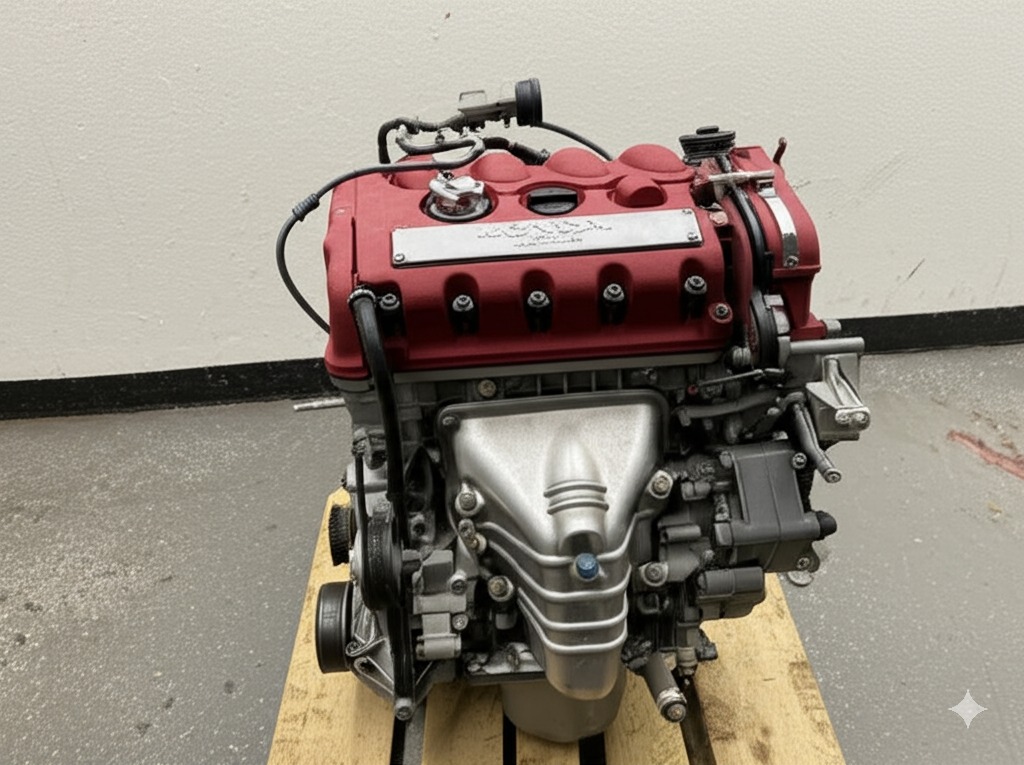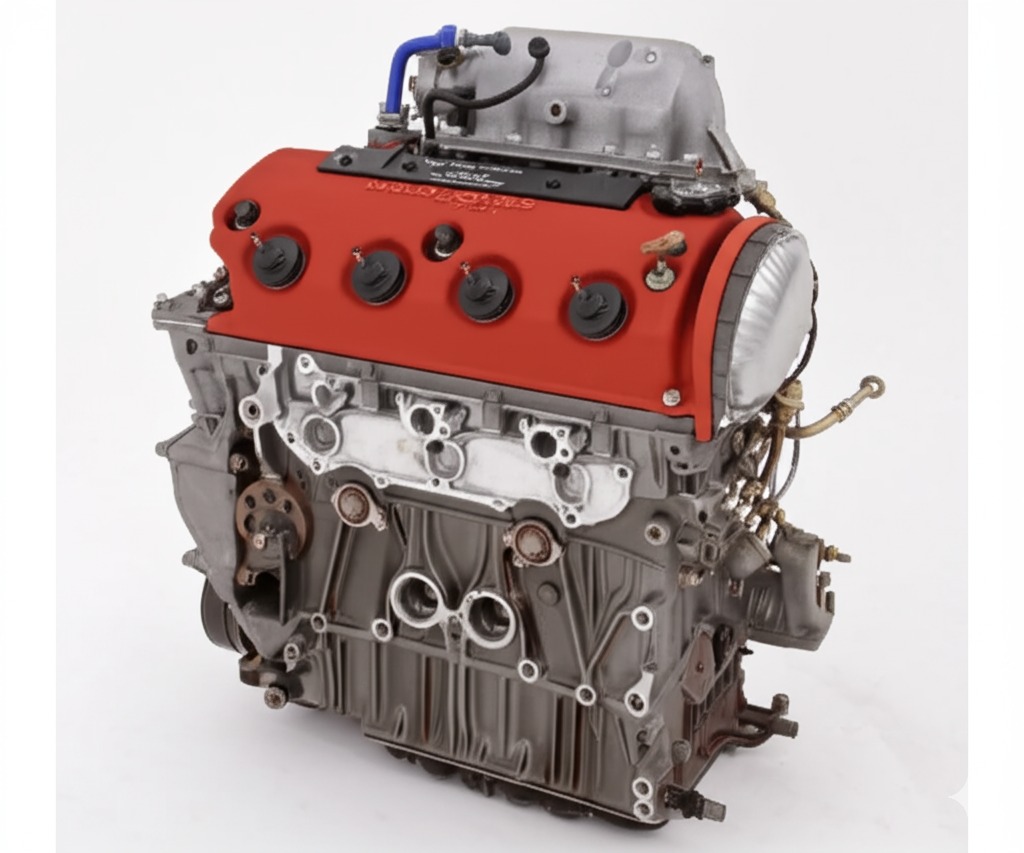The D16Y7 (non-VTEC) and D16Y8 (SOHC VTEC) are two of Honda’s most iconic 1.6L engines, but their performance philosophies differ drastically. Below is a detailed comparison for enthusiasts, tuners, and mechanics.
Contents
1. Specifications
| Spec | D16Y7 (Non-VTEC) | D16Y8 (VTEC) |
|---|---|---|
| Displacement | 1.6L (1590cc) | 1.6L (1590cc) |
| Power | 106 HP @ 6,200 RPM | 127 HP @ 6,600 RPM |
| Torque | 103 lb-ft @ 4,600 RPM | 107 lb-ft @ 5,500 RPM |
| Compression Ratio | 9.4:1 | 9.6:1 |
| VTEC System | None | Single-stage (intake-only) |
| Redline | 6,800 RPM | 7,200 RPM |
| Fuel System | Multi-point injection (OBD2) | Multi-point injection (OBD2) |
2. Engine Design Differences
Cylinder Head & Valvetrain
D16Y7: Non-VTEC head with smaller valves and a mild camshaft profile optimized for low-end torque.

D16Y8: VTEC-equipped head with larger intake valves and an aggressive high-RPM cam profile. VTEC engages at ~5,500 RPM, switching to the high-lift cam lobe.

Intake/Exhaust Manifolds
- D16Y7: Cast iron exhaust manifold and a restrictive intake manifold for low-RPM efficiency.
- D16Y8: Higher-flow intake manifold and a tubular exhaust header (in some models) to complement VTEC airflow.
ECU & Tuning
- Both use OBD2 ECUs, but the D16Y8 has more aggressive fuel/ignition maps to match VTEC engagement.
- Aftermarket tuning is easier for the D16Y8 due to VTEC-specific chips and piggyback systems.
3. Performance Analysis
Powerband Comparison
- D16Y7: Linear power delivery with stronger low-end torque (ideal for daily driving).
- D16Y8: Noticeable “kick” post-5,500 RPM when VTEC activates, but weaker below 3,000 RPM.
Dyno Results
- Stock D16Y7: ~100-105 WHP, flat torque curve.
- Stock D16Y8: ~115-120 WHP with a 10-15 WHP spike after VTEC engagement.
4. Practical Considerations
Reliability
- D16Y7: Prone to oil burning due to weaker piston rings (especially high-mileage engines).
- D16Y8: More complex VTEC system (solenoid failures, oil pressure issues) but generally robust if maintained.
Parts & Swap Compatibility
- D16Y7: Cheaper parts, but limited performance potential.
- D16Y8: VTEC components (solenoids, heads) are costlier but widely available.
- Both engines share the same mounts and transmission bolt patterns (e.g., Y8 head swaps onto Y7 blocks).
5. Recommendations
Best Use Cases
- Fuel Economy: D16Y7 (better low-RPM efficiency).
- Turbocharging: D16Y7 (lower compression, simpler setup).
- Tuning: D16Y8 (VTEC responds well to cams, headers, and ECU tuning).
Final Verdict
The D16Y8 is the enthusiast’s choice for its VTEC thrill and tuning potential, while the D16Y7 suits budget builds or turbo applications. For swaps, the Y8’s wiring (VTEC + OBD2) adds complexity but pays off in performance.
